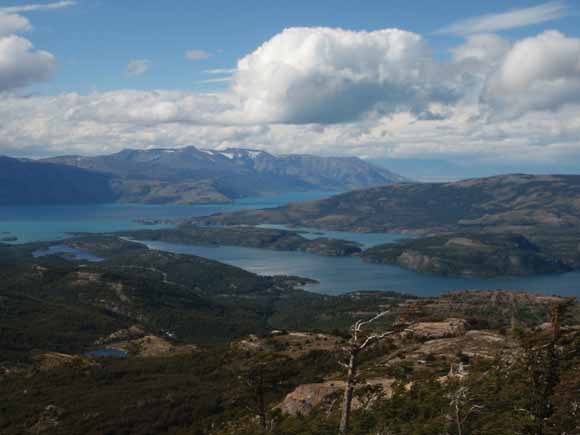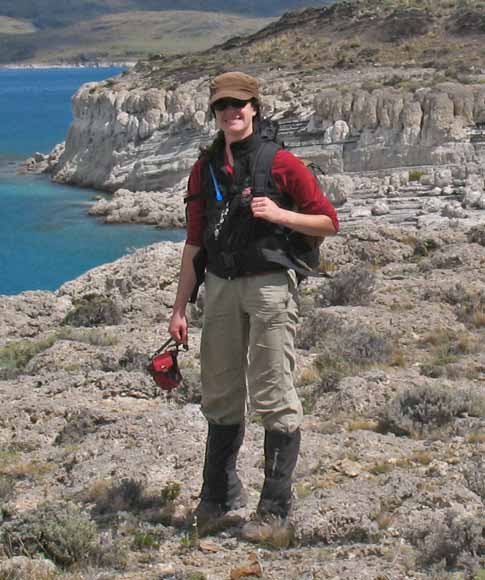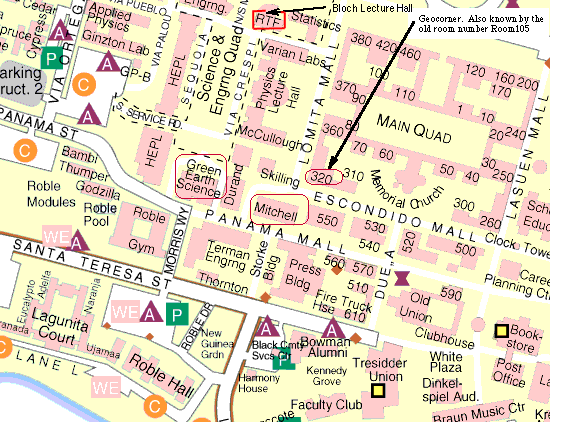
Location: Stanford University
This will be the 415th meeting since 1954

Fold-and-thrust belts exemplify a dynamic balance between lithospheric convergence, thrust loading, topographic development, erosion, and sedimentation along convergent margins. The Cretaceous-Neogene Patagonian fold-thrust belt and Magallanes retroforeland basin of southernmost South America is one such system that records prolonged deep-water basin-filling associated with a thrust belt that developed on Jurassic oceanic and attenuated continental crust. As such, the Patagonian fold-thrust belt affords an opportunity to study the kinematic history of thrust propagation into a retroforeland domain with an inherited marine setting. The kinematic history of the Patagonian fold-thrust belt and evolution of the associated Magallanes foreland basin is reconstructed using new geologic mapping, 2D seismic-reflection data, and zircon U-Pb geochronology. Results span a 170 km-wide transect of the thrust belt and Magallanes Basin near 51° 30’S and highlight the role of inherited extensional structures on basin paleogeography, syntectonic sedimentation, and Late Cretaceous-Neogene foreland shortening. A palinspastic reconstruction of thrust belt deformation suggests at least 40 km of retroarc shortening following closure of the Rocas Verdes Basin and incipient growth of the thrust belt. A significant proportion of this retroforeland convergence occurred during 88-80 Ma development of a structural duplex within the Upper Jurassic volcanogenic Tobífera Formation, synchronous with deep-water foredeep deposition. Deformation and uplift of the Upper Cretaceous deep-water Magallanes Basin occurred during subsequent phases of Tertiary retroforeland shortening. New zircon U-Pb ages from the sedimentary succession and cross-cutting intrusions further refine the timing of deformation. Ongoing detrital thermochronology of the Magallanes basin fill will further characterize the timing of thrust belt development and allow for a more detailed paleogeographic reconstruction of the foreland basin system.

Julie Fosdick
Julie Fosdick is a fourth-year PhD Student in the Department of Geological & Environmental Sciences at Stanford University. A native Californian, Ms. Fosdick grew up on stage in the Arena Theatre, nearby to the San Andreas Fault in Point Arena. In 2004, she received her B.S. in Geological Sciences from the University of California, Santa Barbara. Ms. Fosdick studied normal faulting in the Basin and Range Province and received her M.S. from Stanford University in 2007. She is currently studying the structural evolution of the Patagonian fold-and-thrust belt and Magallanes Foreland Basin in Chile and Argentina. Ms. Fosdick’s research integrates structural mapping, basin analysis, and low-temperature thermochronology to assess the timing and origin of thrust belt exhumation.
Reservations: The preferred way to make reservations is simply to email John Spritzer at jspritzer@usgs.gov by May 7, tell him you will attend, commit to pay, and bring your payment to the meeting. John always emails a confirmation; if you don’t get one, assume email crashed yet again and email him a second time. A check made to “PGS” is preferred, payable at the meeting.
If you want to pay in advance:
Everyone (including Stanford folks now) Please make dinner reservations by May 7. Contact John Spritzer, at U.S. Geological Survey, 345 Middlefield Road, MS-973 Menlo Park, CA 94025, Tel.: (650) 329-4833. Send check made out to “PGS” to John.
Dinner is $35.00. Includes wine (5:30 to 6:15 PM.) and dinner (6:15-7:30 PM.).
For students from all universities and colleges, the dinner, including the social 3/4-hour, is $8.00 and is partially subsidized thanks to the School of Earth Sciences, Stanford University (Note, no-show reservations owe the full price).
Doris, whose wonderful crew prepares our meals, asked that we let you know that people who are late RSVPing and people who show up without a reservation will be welcome but that they will be eating on paper plates with plastic utensils (food supply permitting).
Dues for Academic Year 2009-2010 ($10.00) should be sent to John Spritzer, U.S. Geological Survey, 345 Middlefield Road, MS-973 _Menlo Park, CA 94025. John’s phone: (650) 329-4833.
Officers: Vicki Langenheim, President; Jon Hagstrum, Vice President; Mike Diggles, Secretary; John Spritzer, Treasurer; Elizabeth Miller, PGS Stanford University Coordinator

Date created: April 6, 2010
Last modified: April 6, 2010
Created by: Mike Diggles, Webmaster-Secretary, PGS.